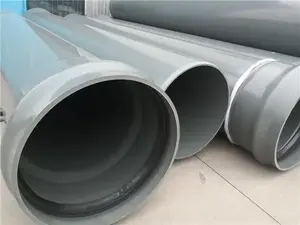Introduction to CPVC Reducer Coupling
CPVC reducer coupling is a vital plumbing component designed to facilitate the connection of pipes with different diameters in a seamless manner. Made from chlorinated polyvinyl chloride (CPVC), these couplings provide durability, corrosion resistance, and the ability to withstand high temperatures. Ideal for both residential and commercial applications, CPVC reducer couplings are essential for ensuring smooth and leak-free plumbing systems.
Types of CPVC Reducer Couplings
CPVC reducer couplings come in various configurations to suit different plumbing needs. Here are the primary types:
- Conical Reducer Couplings: These are designed with a tapered end to create a smooth transition between larger and smaller pipe sizes.
- Socket Reducer Couplings: Featuring a female socket on one end, these are ideal for connecting a larger CPVC pipe to a smaller one.
- Threaded Reducer Couplings: These couplings have the advantage of male and female threads, allowing for screwed assemblies when various joint types are needed.
- Flanged Reducer Couplings: Designed for applications requiring bolted connections, flanged reducers are ideal in large-scale plumbing systems.
Features and Advantages of CPVC Reducer Couplings
The effectiveness and wide application of CPVC reducer couplings stem from their unique features. Here are some notable characteristics:
- Corrosion Resistance: CPVC is naturally resistant to chemical and physical deterioration, making it suitable for various environments.
- High Thermal Stability: Capable of handling temperatures up to 200°F (93°C), CPVC reducer couplings are perfect for hot water applications.
- Lightweight Design: Their lightweight nature makes these couplings easy to handle during installation and reduces overall piping system weight.
- Easy Installation: CPVC reducer couplings can be adapted with simple solvent welding, making the connection process streamlined and efficient.
- Cost-Effective: These couplings are typically less expensive compared to metal alternatives which can lead to savings in both materials and labor.
How to Use CPVC Reducer Couplings Effectively
Proper installation and use of CPVC reducer couplings ensure the longevity and performance of piping systems. Follow these guidelines:
- Preparation: Cut the pipes squarely to ensure that they fit snugly into the coupling. Remove any burrs or rough edges to enhance the fitting.
- Cleaning: Clean the ends of the pipes and the inside of the coupling with a solvent cleaner to ensure optimal adhesion.
- Solvent Application: Apply an appropriate CPVC solvent cement generously on the pipe and the coupling, ensuring complete coverage.
- Joining: Quickly insert the pipe into the coupling, twisting it slightly for an even distribution of the adhesive, and hold for a few seconds to allow the cement to take hold.
- Curing Time: Allow sufficient curing time according to manufacturer instructions before testing the connection with water pressure.
Conclusion
In summary, the CPVC reducer coupling is an essential component for managing different pipe sizes in plumbing systems. Its array of types, features, and advantages make it a premier choice for modern applications. When properly used, these couplings facilitate efficient, reliable, and safe plumbing installations, delivering superior performance whether in residential or industrial settings.











































